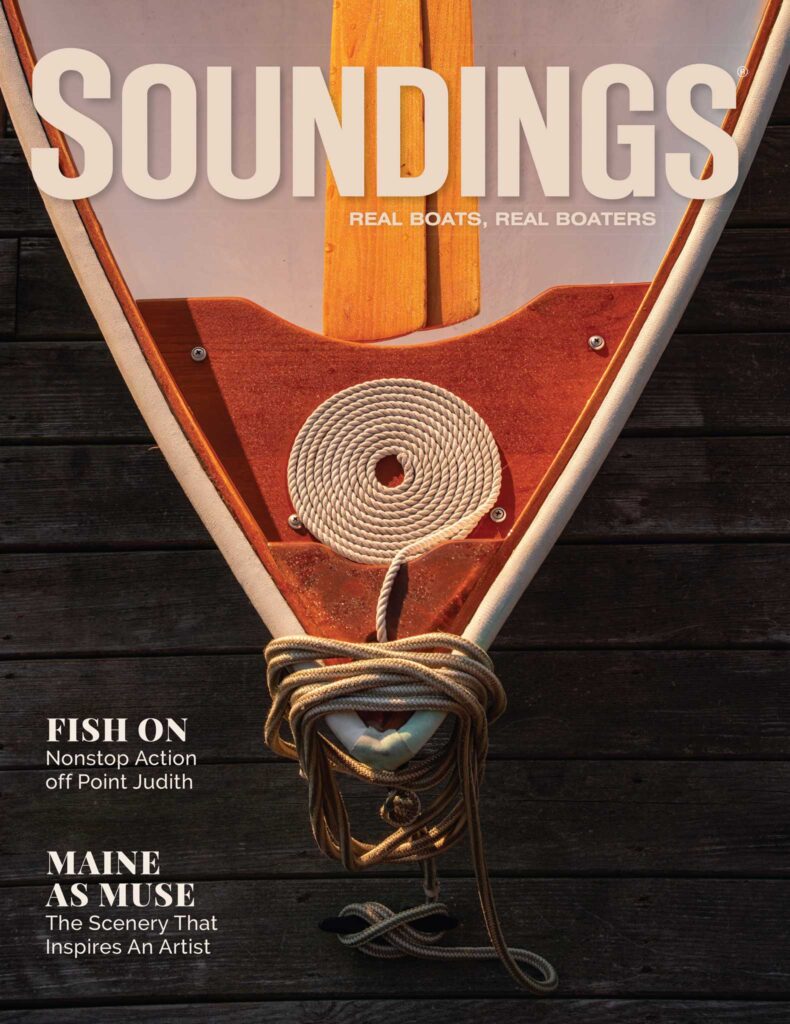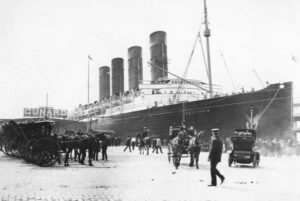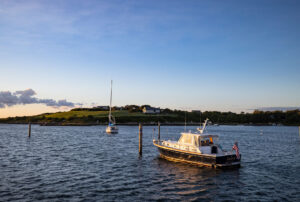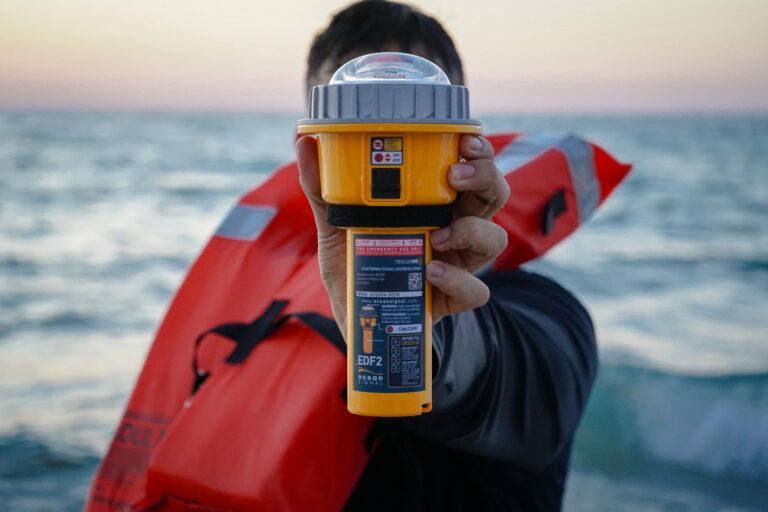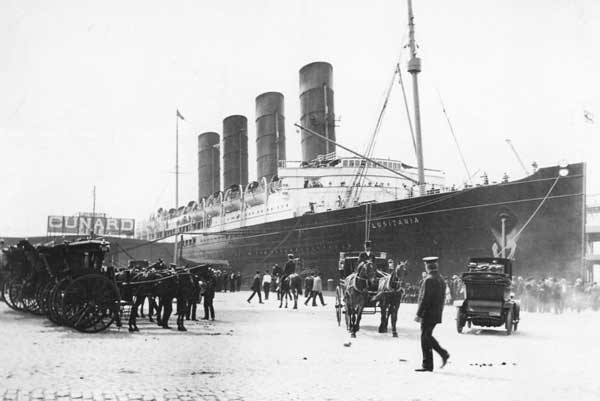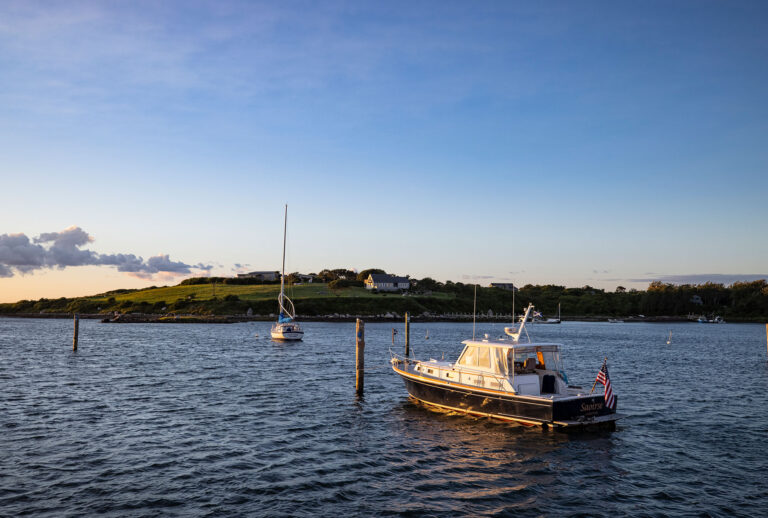Kevin Feindel is a good example of how deep the roots go in Lunenburg. He and his wife are descendants of immigrants who arrived there 260 years ago on one of the very first ships that brought settlers to the well-protected harbor.

“When I’m down here at the foundry, I’m very close to where our ancestors came ashore in 1753 from Germany,” says Feindel, general manager of the Lunenburg Industrial Foundry. “My wife and I live eight miles away, and we joke that we’ve come a long way.”
Although boatbuilding has a long tradition throughout Nova Scotia, John Steele, head of Covey Island Boatworks, says the work force in Lunenburg stands out for its talents with wooden boats. “At one time, Nova Scotia had the second-largest commercial sailing fleet in the world, second only to the Brits. We build a lot of boats,” he says.
The town was planned and laid out by the British, who sponsored a shipload of “foreign Protestant” settlers, mostly from Germany and Switzerland. They arrived in 1753 largely to counter French Catholic settlements elsewhere in Nova Scotia. Lunenburg was named in honor of Britain’s King George II, Duke of Brunswick-Lüneburg, and it built a thriving economy based on farming, fishing and shipping.
During the “Bluenose Era” of the 1920s and ’30s, when Lunenburg developed a major fishing industry, its harbor was crammed with sailboats, and its shores were literally covered with fish-drying flakes. In 1940, when Nazi Germany invaded Norway, the Norwegian whaling fleet put into Lunenburg for safe harbor. The Norwegian government in exile set up Camp Norway on the edge of town to train and house several thousand Norwegian sailors and soldiers, who either shipped out to war or worked refitting ships. And like almost all port towns and cities along the Nova Scotia coast, Lunenburg also played a role in rum-running during Prohibition.
Given Lunenburg’s highly skilled carpenters, it’s not surprising that they customized the homes they built. One distinctive element in many of the charming and colorful old houses that cling to the steep sides of the harbor is the “Lunenburg Bump” — a five-sided dormer unique to the area. The original settlement (Old Town Lunenburg) has remained largely intact and has some of the oldest architecture in Nova Scotia. One of the most stunning local buildings is the Lunenburg Academy, which is now the town’s public elementary school.
Lunenburg’s fortunes followed the decline of the fishing industry, and the federal and provincial governments responded by restoring the waterfront and developing the town’s sea-based heritage for tourism. The Fisheries Museum of the Atlantic began on the docks in 1967 aboard Canada’s oldest saltbank schooner, the Theresa E. Conner, which is still its flagship. The museum has grown to include a large complex of historic buildings on the waterfront, along with other ships and boats, an aquarium and a range of exhibits, many geared toward children.
The museum is also home to the “Bluenose Shrine” — the actual silver International Fisherman’s Trophy that Bluenose won and never lost, along with artifacts from the old schooner. Two small but intriguing nearby exhibits not to be missed are of Sable Island — truly a “graveyard of the Atlantic,” where hundreds of fishermen perished — and of the colorful local history of rum-running. A great read (available in the museum’s store) is an autobiography by Hugh Corkum, “On Both Sides of the Law.” Corkum was a very successful local rum-runner who later became Lunenburg’s longest-serving and a flamboyant chief of police.
In 1992, Old Town Lunenburg was designated as a National Historic District by the federal government. Three years later, it was added to the UNESCO World Heritage List as the “best surviving example of a planned British colonial settlement in North America.”
Today, shipbuilding and fishing remain mainstays of the local economy, as demonstrated by the town’s busy commercial waterfront, the Lunenburg Industrial Foundry and the big Highliner fish-processing plant at the far end of the harbor. But the town is also gentrifying and has several high-end restaurants, excellent bed & breakfast inns, even a boutique distillery, Ironworks, in a beautifully restored wooden warehouse near the docks.
One of Lunenburg’s more remarkable attractions is Elizabeth’s Books, which opens whenever the owner feels like it (usually after 6 p.m.) and stays open as long into the night as he wants. The jammed and eclectic store is owned by Chris Webb, a colorful Englishman who named the store for the owner who sold it to him, a good friend who died of cancer. Webb is a former merchant mariner who served on 50 ships and traveled the world before dropping anchor in Lunenburg. His odd hours are kept with fellow mariners in mind.
“In the summer the harbor will be filled with 50 to 60 boats from all over the world. And they come ashore, and late at night I’m the only place that’s open,” Webb says. “I’ve sold books here at 1 in the morning. It suits me being a night person, and it suits a lot of other people, too.”
See related articles:
July 2013 issue

